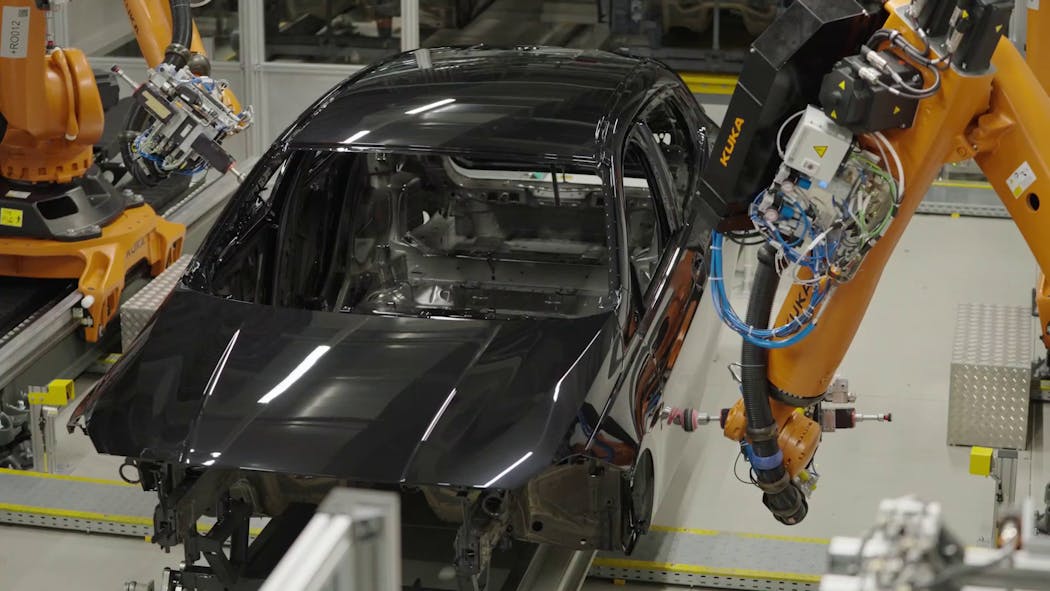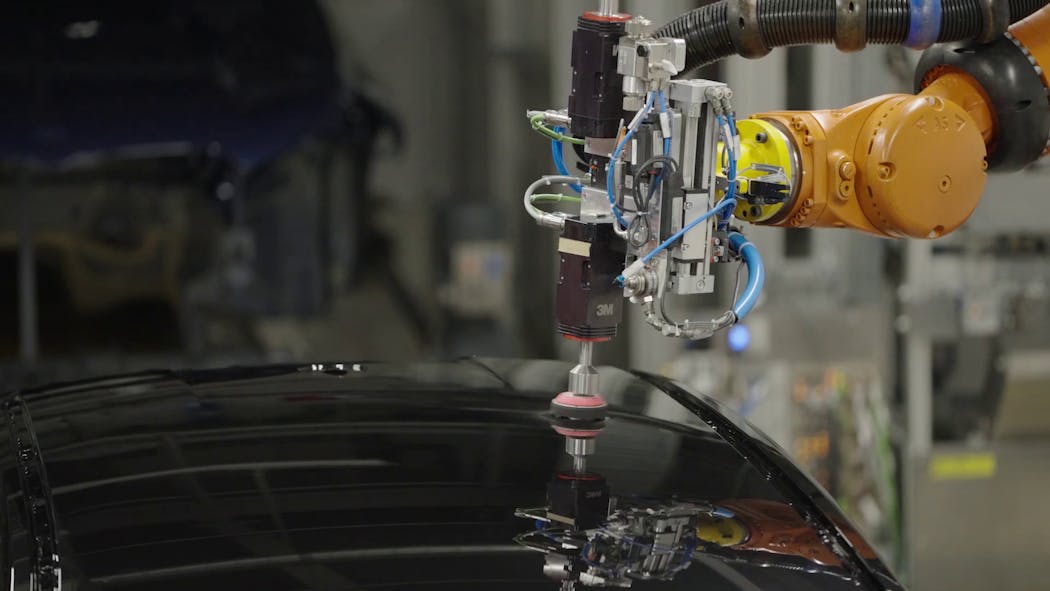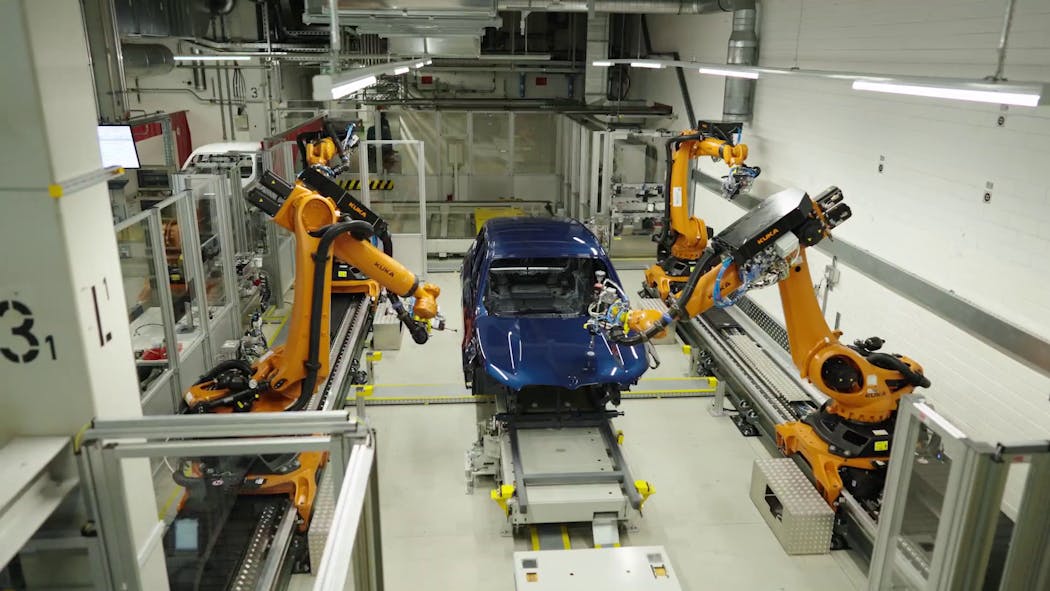3M opened its first robotics lab more than 30 years ago to help customers figure out how to automate with 3M products.
But only in recent years, while jobs continue to outnumber available workers, has 3M really started to come out and say: Here are the robotic solutions to your labor shortages.
"That's the direction our customers are headed. They can't get people," said Scott Barnett, 3M's director of robotics and automation application engineering. "There's a major labor shortage, so they're all looking for ways to automate."
As 3M considers its future growth, automation has become a key priority. Billions will be spent on industrial automation in coming years, according to a McKinsey survey, and 3M wants a slice.
The company doesn't build robots; it makes parts and tools that make them work for a specific purpose. Maplewood-based 3M marries some of its oldest products, like abrasives, with robots that can touch up paint on cars or polish stainless steel.
"When it comes to the abrasives world, it's very labor-intensive," said Tyler Naatz, a robotics application engineer. "In the last few years, automation has been better received, even by people doing the grinding. Injury prevention is big."
Addressing a common criticism — that automation takes people's jobs — 3M recently opened an auto-body training center in St. Paul to help equip and fill the expected 100,000 technician jobs that will be needed across the U.S. in the coming years.
"With rapidly changing vehicle technology and a shortage of qualified collision repair technicians, investment in training is crucial," Dave Gunderson, president of 3M's automotive aftermarket division, said in a statement.
Automakers have had similar hiring troubles in recent years, especially for labor-intensive jobs like paint touch-ups that had long proved difficult to hand over to robots.
Here's what automating that kind of work looks like.
New car bodies are typically inspected for paint defects before final assembly. This paint touch-up station on a BMW production line in Regensburg, Germany, now features an automated system powered by 3M's Finesse-it Robotic Paint Repair System that can scan for defects and polish them out.
"Traditionally humans find these by eye and repair them by hand, and they only have so long — about three defects per operator," said Brittany Moren, an abrasives application engineer. "Over the course of a shift, they see fewer defects and repair fewer defects."
On one end of the robotic arm is a random orbital sander. The pressure, speed and aggressiveness of the abrasive is just enough to remove the defect and a small part of the clear coat without damaging the base paint below. A small amount of water is dispensed during sanding, then it is wiped clean before polish is applied and buffed.
On the other end is a random orbital buffer, which spins at high speeds at a specific pressure to incorporate the new polish and remove scratches left behind by the sanding process. The robot arm has highly sensitive pressure controls and programming that can deal with the curvature of a car's body.
The machine can replace its own abrasive pads, which are also supplied by 3M. The system adds an automated element to materials 3M is already supplying to the automotive industry.
"We've been involved in the manual process since its inception," Barnett said.
Artificial intelligence is seen as the future of these paint touch-up stations to fully automate the process. For now, some human input is still needed to set up and continue to optimize each system.
Surface treatments like sanding and painting are still seen as some of the hardest industrial processes to automate, according to a McKinsey survey.
"We've known for many years this is something customers will want to automate," Barnett said. "But the concept of not having a human and using an abrasive on paint has been scary for a lot of manufacturers."
But if one company sticks out its neck and finds success, as is the case with the BMW plant, Barnett expects others will quickly follow.
"You have lead users interested in being out in front and taking the risk," he said. "Then you have fast followers. They want the lead users to work out the bugs."







